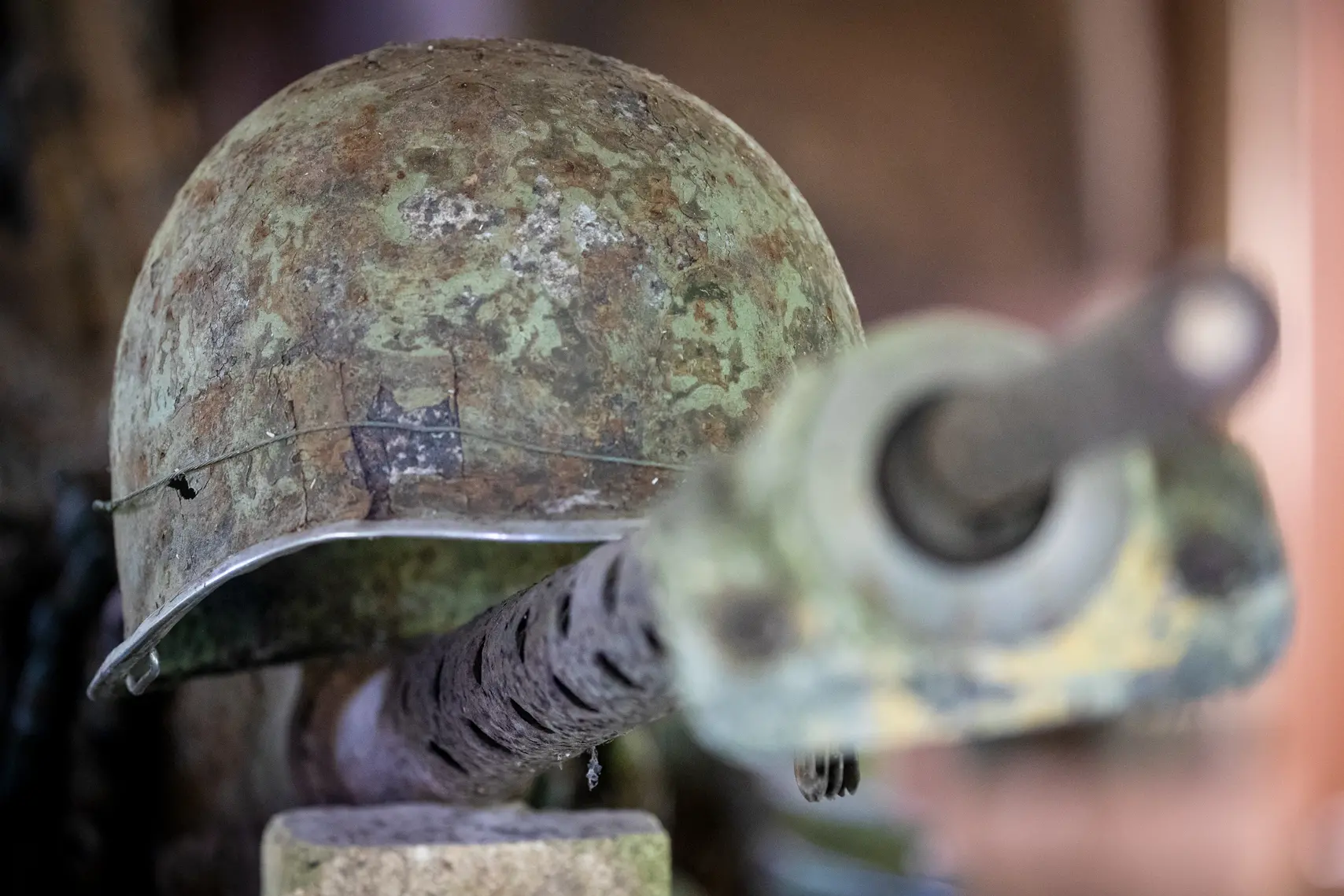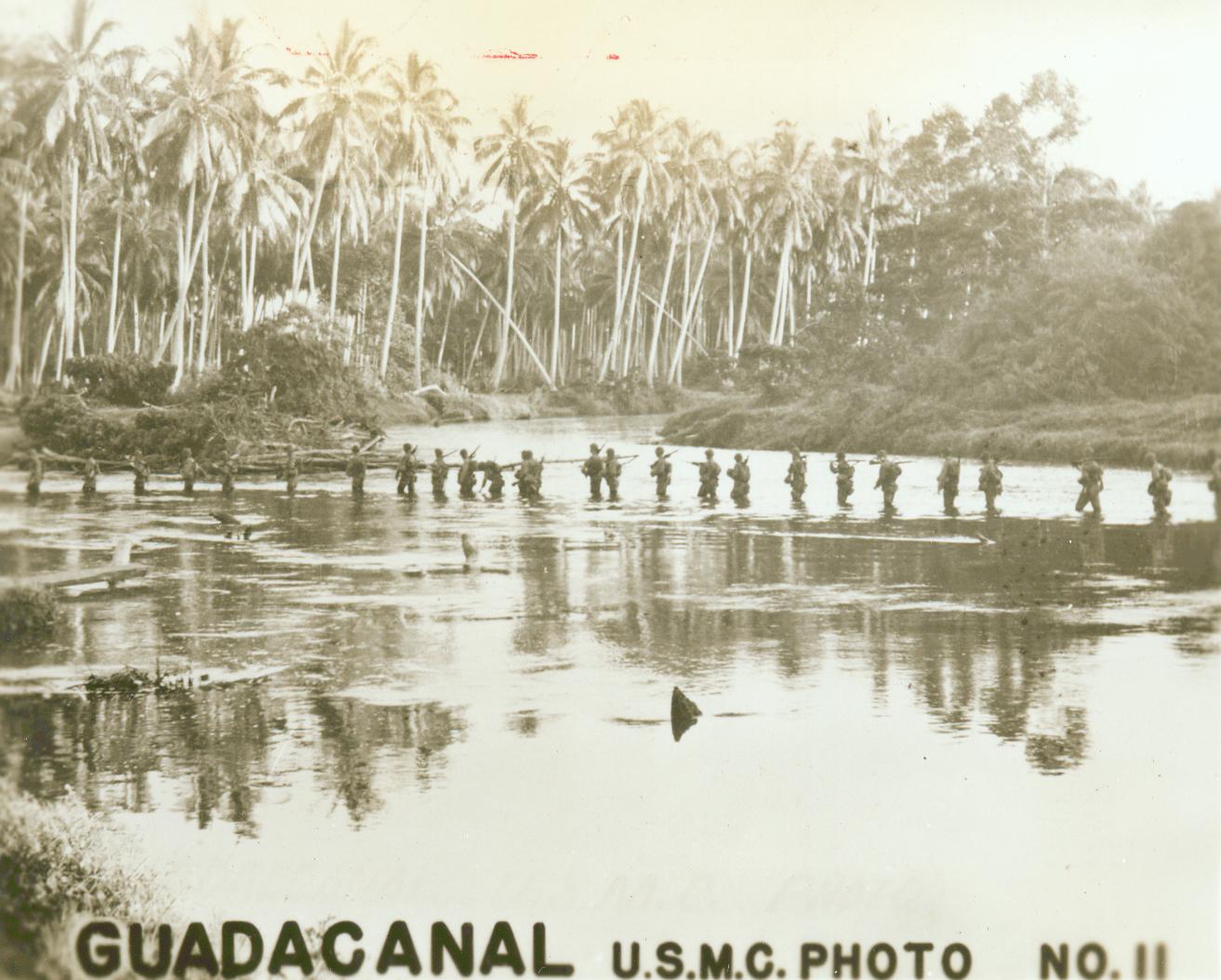To win the hearts and minds of Pacific Islanders, the U.S. and Japan must address the wrongs of the past that continue to kill.
We move stealthily in the tall grass and take our position behind a giant rain tree. Our pretend-guns, fashioned out of rusting pieces of iron or sticks, are in battle posture. Ready to attack. On our head, some wear rusty helmets found in the jungle around our school. They are World War II relics left behind by American and Japanese soldiers. Our team is Merika, our word for “America.” Lurking somewhere in the tall grass are our rivals — team Japan.
This is a war game based on the story of an actual war that took place on our island, Guadalcanal, about four decades earlier. Our games are in the early 1980s. We are 12- to 14-year-olds at St. Joseph Catholic Secondary School at Tenaru, five miles east of the national capital, Honiara. It is a mile inland from the infamous Red Beach, where the U.S. Marines landed in August 1942 to start their Guadalcanal campaign.

As a nonprofit journalism organization, we depend on your support to fund more than 170 reporting projects every year on critical global and local issues. Donate any amount today to become a Pulitzer Center Champion and receive exclusive benefits!
Two miles west from the school is Bloody Ridge, named after the bloody battle between the Americans and Japanese in September 1942. A mile away is Henderson Airport, the main international airport in Solomon Islands. It was built by the Japanese earlier in World War II, but taken over by the U.S. Marines. It was subsequently named in honor of U.S. Marine Corps Major Lofton Henderson, the commanding officer of the VMSB-24 who was killed in the Battle of Midway.
Across the fence from our school is Hells Point. It used to be a World War II munition depot, but at the time of our childhood war games is littered with war relics: rusting tanks, helmets, bayonets, Coca-Cola bottles, building foundations, and other war memorabilia. The most dangerous are unexploded ordnances, commonly known as UXO. Hells Point is off limit to civilians.

Nowadays, I live in Honolulu, far from my childhood playgrounds on Guadalcanal. I often reflect on how my old school was built on a World War II battle ground. The stories of war are inscribed on the landscapes and documented in the relics that litter the forests and grasslands. As kids, we retold the stories in our war games, drawing on what we hear from elders and read in books.
When the U.S. and Japanese forces withdrew, they left behind sunken ships, rusting vehicles and planes, chemical wastes, and thousands of UXO. Hells Point is now a base for the Royal Solomon Islands Police bomb squad and where they detonate many of the UXO they retrieve. What they find, collect and destroy is a fraction of what is out there. These UXO continue to kill Solomon Islanders, 80 years after the U.S. Marines first landed on Guadalcanal. Civil Beat chronicled stories of UXO-related tragedies in a series of well-researched and vividly told stories.
Civil Beat published a story about John Manele and his 13-year-old son, Junior Dominic Buataiha, who were killed by UXO late last year as they prepared dinner in the outskirts of Honiara. The mother, Loretta Manele, and her 17-year-old son, Jeffry, were wounded, but survived. Loretta is the daughter of Steven Ale from Bokasughu village, not far from my village on the southern coast of Guadalcanal.
After that incident, I received pictures of the mangled body of one of the victims and messages asking if the U.S. and Japan can compensate for their lives. My people thought because I live and work in the U.S. I could help. The truth is I didn’t know what to do.
Colonial Control
Solomon Islands’ tragedies with UXO raise bigger issues. When U.S. government officials talk about their relationship with Pacific Island countries, they often reference World War II. The narrative is usually about the liberation of the islands from Japan. There are also stories of collaboration with Pacific Islanders, like Solomon Islands’ Coast Watchers.
What is often not talked about is how the war paved the way for strengthening colonial control of the islands and their use for military purposes. Some islands were used for nuclear weapons testing: the U.S. in Bikini and Enewetak atolls in the Marshall Islands and Johnston Atoll; the French in Moruroa and Fangataufa in French Polynesia; and the British at Malden Island and Kiritimati Atoll in Kiribati. Kahoolawe in Hawaii was used by the U.S. military as a bombing range.
When the U.S. and Japanese forces withdrew, they left behind sunken ships, rusting vehicles and planes, chemical wastes, and thousands of UXO.
They usually do not talk about the waste World War II’s warring parties left behind, including UXO, and the impacts they continue to have on Pacific islands’ environments and peoples.
In August U.S. Deputy Secretary of State Wendy Sherman traveled to Honiara to commemorate the 80th anniversary of the U.S. Marine landing on Guadalcanal. At the ceremony she said “we remember the pain and strife that scarred the Pacific. We honor the memories of those who died and were injured — both during the war itself, and in the years afterward, as a result of unexploded ordnance and other after-effects of the conflict. And we recommit ourselves to moving forward together as partners — and as true and lasting friends.”
It was good she acknowledges the tragedies with UXO. It would have been better to announce a stronger commitment from the U.S. and Japan to clearing UXO. As they strengthen their relationship, the U.S. and Japan must collaborate to clean up the mess they left after World War II, not only in the Solomon Islands, but also in other Pacific islands.
As I recount our childhood war games between Merika and Japan, I reflect on a much bigger war game brewing: the geopolitical competition between the U.S. and China. As these global powers compete for influence over Oceania, they must help Pacific island governments, like the Solomon Islands, clear UXO and other waste from WWII. To win the hearts and minds of Pacific Islanders, the U.S. and Japan must first address the wrongs of the past that continue to kill our people.
We want a Blue Pacific. Not an exploding Pacific.








